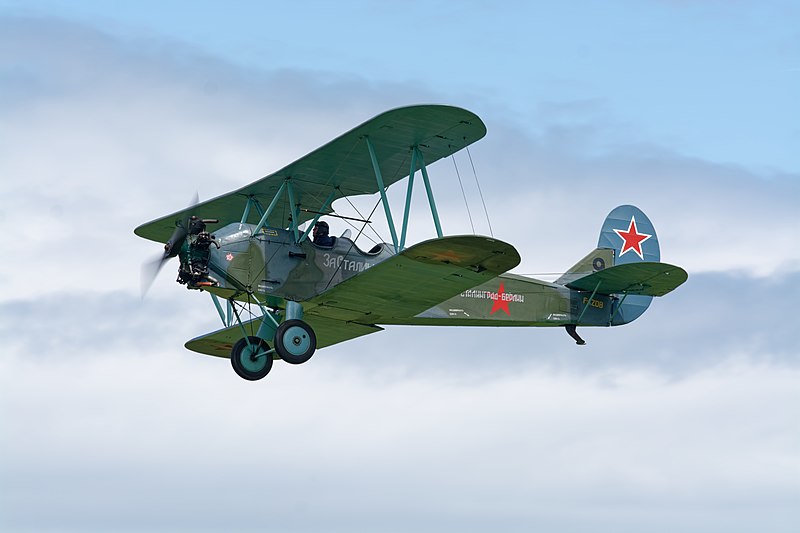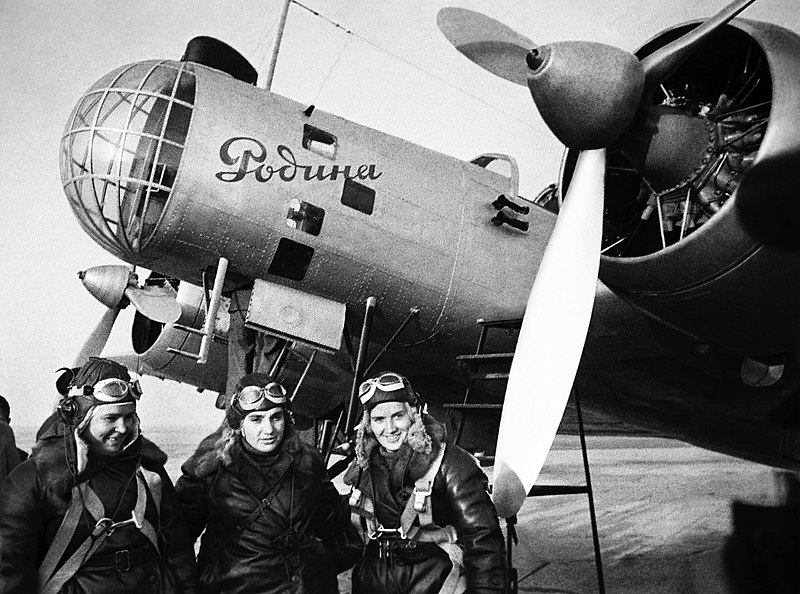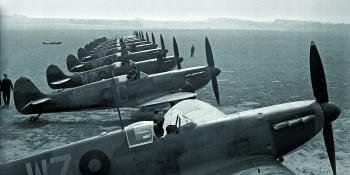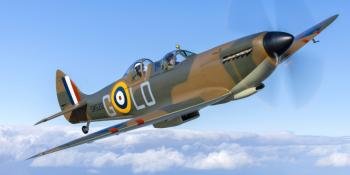Ill-equipped and inexperienced, the 588th Night Bombing Regiment should have been a colossal failure. But Marina Raskova and the ‘Night Witches’ had other ideas…
During the 1940s, it took serious courage for a Soviet person to stand up to Premier Joseph Stalin. So imagine the guts it took for a woman to do just that, and to demand an all-female fighter pilot regiment to aid the country’s war effort in the skies.
In a victory that made the Soviet Union’s military aviation sector an unlikely bastion of progressive and inclusive attitudes to feminism, Marina Raskova got what she wanted. In fact, she got three regiments.
The Night Witches were born.
And they would make the Luftwaffe’s lives hell.

Marina Raskova – the ‘Mother of Witches’
To be labelled the ‘Soviet Amelia Earhart’ is some feat – especially given Earhart’s countless contributions to aviation. But Marina Raskova certainly earned this moniker, and exceeded its expectations by amassing flying opportunities for women in a country hardly renowned at the time for equal opportunities.
Born in 1912, her original aspiration to be an opera singer fell to the wayside when an unfortunate middle-ear infection left her unable to sing. Opting for a different career, Raskova studied engineering before ultimately becoming a pilot/navigator in the Soviet Air Force during 1933. She was the first female navigator in the Soviet Union, and the unsurprising recipient of considerable cynicism from her male colleagues.
Having been receiving letters from women across the Soviet Union regarding their desire to join the war effort against Germany, Colonel Marina Raskova duly appealed to Stalin through her personal connections, and on October 8, 1941 her persistence paid off. History was made as Stalin gave orders to deploy three all-female air force units: the 586th Fighter Regiment, 587th Bomber Regiment and 588th Night Bomber Regiment. By mid-October, a training camp was set up in the city of Engels in Saratov Oblast, to accommodate the hundreds of young women who came forward, hoping to break into the elite ranks of female Soviet pilots.
But it wasn’t as easy as simply asking to be in a specific regiment – there were stringent specifications. Only women with advanced piloting experience were assigned to the Fighter Regiment, as it was vital for them to have quick reactions and the ability to remain calm in battle. Professional female pilots, who had amassed significant flying hours were appointed to the Heavy Bomber Regiment, which Raskova led herself. Finally the least experienced were sent to the Night Bomber Regiment – the reasoning being that as these women would work under the cover of darkness. It was deemed their lack of experience wouldn’t be as much of a concern.
However, only one of the three original regiments is reported to have remained exclusively female – the 588th. Despite its enforcement by Stalin, this regiment was met with great scepticism. With the military disinclined to dedicate funds to the unit, they lacked in many areas their male equivalents would have taken as standard. They didn’t have radios… and even lacked parachutes.
With their universally sized 42 boots, ill-fitting uniforms, and short haircuts, the pilots of the 588th were met by Raskova on their arrival at Engels. Over the coming months the regiment was then trained to fly harassment and tactical bombing missions against the German military in their antiquated Polikarpov U-2 biplanes.
Their relentlessly infuriating tactics against the Germans would earn them the nickname of ‘The Night Witches’.
Polikarpov U-2
The Polikarpov U-2 was – and remains – the most produced military biplane of all time with some 30,000 built between 1928-59. Originally designed as a crop duster and training aeroplane, it was a reliable and uncomplicated type primarily of made of wood and canvas. It had a maximum speed of 99mph and could carry a crew of two. It contained a Polish-made Shetsov M-11 D 5-cylinder radial engine and was armed with a rear-facing 7.6mm ShKAS machine gun and could carry a light bomb load.
The U-2’s stall speed was significantly lower than its Luftwaffe counterparts – in particular the Messerschmitt Bf 109 and the Focke-Wulf Fw 190. This, along with its exceptional manoeuvrability, made it notoriously difficult for German pilots to shoot down – but its ability to carry just two bombs meant that sometimes eight or more missions a night. On one occasion, two veteran pilots - Yekaterina Ryabova and Nadezhda Popova – flew 18 missions across a single evening.

The tactics of the Night Witches were to idle the engine of the U-2 when nearing their objective and glide, before dropping their bombs and throttling up the engine to continue into the night. Although the bombing raids themselves often did little damage, German forces felt increasingly demoralised as they were unable to cease the harassment. Any German who managed to down a ‘witch’ would be awarded the Iron Cross as a symbol of the Nazi Party’s appreciation for ridding the skies of the menace.
Despite its usefulness to the 588th Regiment, the U-2 had its downfalls. For some of the women, it was incredibly difficult to fly and – more often than not – proved fatal. Its fuselage being made up of wood and canvas made it extremely flammable. Although often able to take significant amounts of damage inflicted by the enemy, if one caught fire it typically went up in flames.
Legacy of the Night Witches
This fierce all-female force of fighter pilots would go on to earn themselves a place in history. Flying more than 24,000 missions during the course of the war, they put many preconceptions about women attempting to aid the war effort to shame. They proved that womankind could be more than simply mothers, wives and homemakers, and reinforced the notion that they could operate machinery other than a sewing machine. They could be engineers, mechanics, navigators, pilots, leaders – heroes. The Night Witches shattered the glass-ceiling of the war effort. Forced to earn their stripes, these women overcame under-funding and a lack of respect in order to help change the course of history.
On January 4, 1943, Marina Raskova died flying a Petlyakov Pe-2 – she crash landed while leading two other to an airfield just outside of Stalingrad. Raskova was given the first state funeral of the war, and her ashes were buried in the Kremlin. She was posthumously awarded the Order of the Patriotic War I Class.

The 588th was determined to continue her legacy, enforcing training and tactics first given by her. The regiment flew its last mission on May 4, 1945. Each woman had completed an average of 80 missions, and 24 were awarded the title of Hero of the Soviet Union. Of the hundreds claiming the titles of Night Witch, the 588th lost just 30 pilots – including Marina Raskova, the ‘Mother of the Witches’.
The Soviet Union, while behind in many other aspects of modernisation at the time, were the first nation to officially allow women into the air force to engage in combat.
Following the war, women were not allowed to enlist in the Russian Air Force until 2017.







